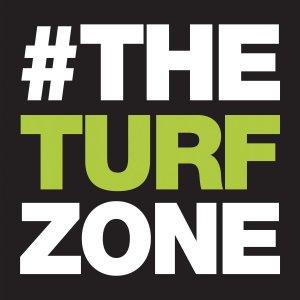The Turf Zone Podcast

Pennsylvania Turfgrass Council – Disease Season 2020 – It wasn’t just COVID-19 causing problems
Pennsylvania Turfgrass – Travis R. Russell and John E. Kaminski, Ph.D.
This year is likely one that we all are going to want to forget. While our undergrads were on spring break and the two-year students were at TPC Sawgrass volunteering for The Players Championship, Penn State decided to shut down campus for the remainder of the semester. Faculty and students scrambled to shift to online learning while others were stuck at home waiting for their internships to begin.
On March 19th, Governor Wolf ordered all non-life-sustaining business to close across the state. Turfgrass managers scrambled to get exemptions to at least be able to maintain their turfgrass during the shutdown. On May 1st, golf courses throughout the state of Pennsylvania were reopened for play. We are all now familiar with “pool noodles” in the cups, no rakes in the bunkers, no touching of the pins, and four golf carts per foursome. Things looked very different from a golf perspective.
From a “turf” perspective, things also started out a little slow. Bentgrass was slow to wake up and Poa seedheads peaked right around the time golf courses were opening. These were all par for the course and not atypical in any given year. Throughout May and June, golf course fairways were in some of the best shape we’ve seen, but turf health was about to go south.
Many areas had limited rainfall. State College had less than 1” of rain total during the months of May, June and July. That also coincided with periods of extreme temperatures in June and July. The need for supplemental irrigation to keep turf alive combined with high temperatures and relative humidity resulted in a series of disease outbreaks in the middle of the summer.
Bacterial Wilt
Bacterial wilt is an uncommon disease of annual bluegrass. Bacterial wilt was diagnosed several times in our lab this year from multiple golf courses throughout the northeast region. In fact, a severe bacterial wilt outbreak occurred on a young annual bluegrass green at our research facility in early June (Figure 1). The disease was initially observed as small, speckled necrotic spots on the green in early to mid-June that quickly coalesced into larger diffuse areas of turf loss by early July.
Control of bacterial wilt is difficult since chemical options are not efficient or practical with products having to be applied after every mowing. Instead, turfgrass managers must designate a mower specific only to the infected turfgrass surfaces and mow in the afternoon when turf is dry to limit spread to healthy areas of turf and to avoid abrasive cultural practices while disease is active.
Anthracnose
Anthracnose (Figure 2) is chronic disease on annual bluegrass green during the summer. Symptoms include yellow to orange spots of infected Poa but expand into a general thinning of highly infected areas. Golf course superintendents can easily identify this disease by looking for blackening at the crown and black fungal structures (i.e. setae) on individual leaves. Although we diagnosed samples from other region in June, anthracnose severity began to increase in the first few weeks of July on our research putting green. By the end of July into early August, anthracnose was uniformly distributed throughout the green.
Preventive fungicide programs are essential to effectively control anthracnose. In addition, minimizing physiological stress is recommended to slow disease intensity. Maintaining adequate fertilization and irrigation will significantly limit physiological stress that can increase disease severity. Increasing mowing height is a critical mitigation strategy but long-term cultural control strategies of reducing organic matter thatch development with regular aerification and routine topdressing when disease is not active will significantly help in combatting the disease.






 Visit Podcast Website
Visit Podcast Website RSS Podcast Feed
RSS Podcast Feed Subscribe
Subscribe
 Add to MyCast
Add to MyCast